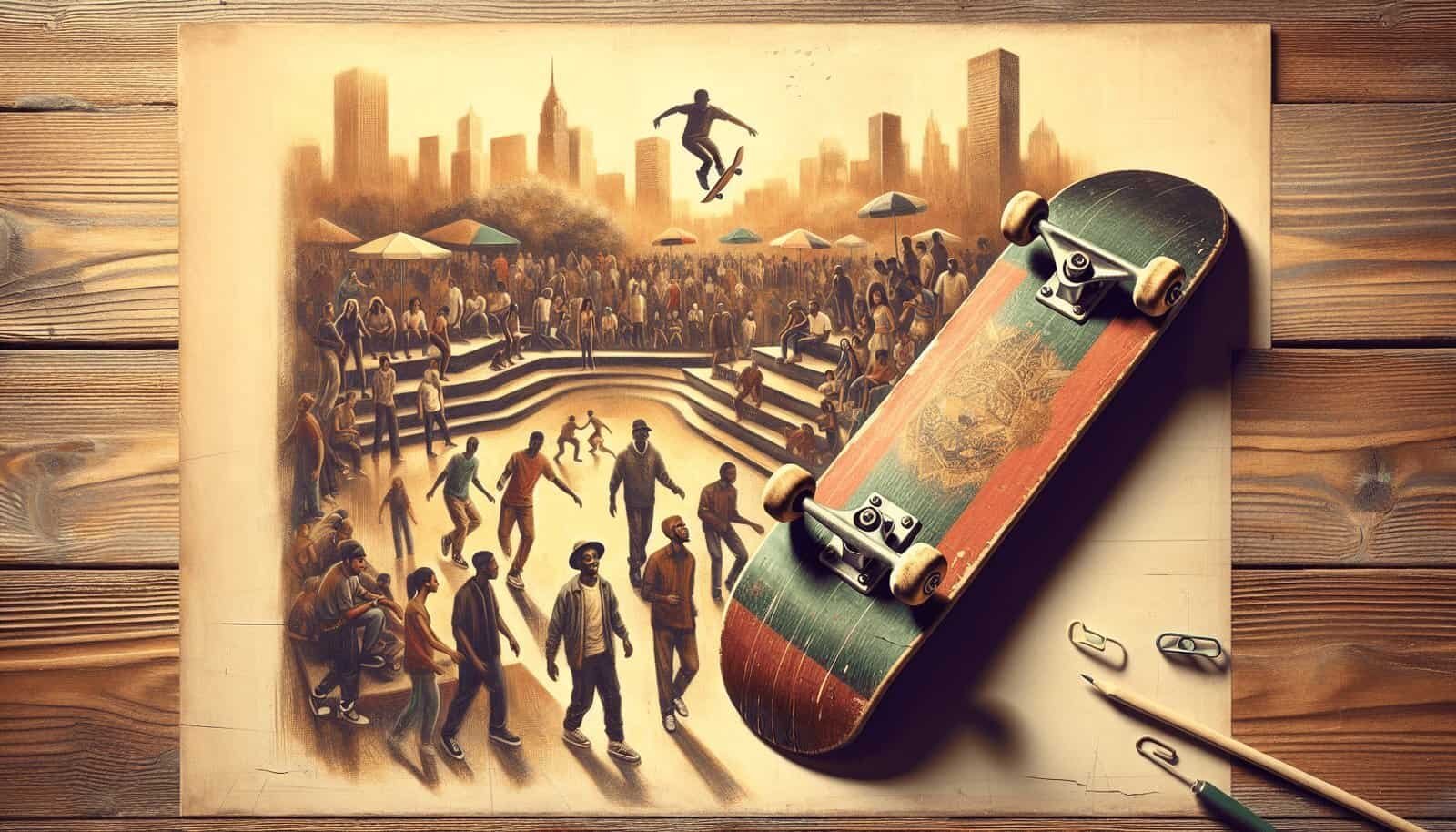Have you ever wondered how a small wooden board with wheels grew into a global cultural phenomenon? The evolution of skateboarding is a fascinating journey through decades of innovation, creativity, and influence, and it’s a story that’s now being highlighted by Google News.

The Birth of Skateboarding: Humble Beginnings
In the late 1940s to early 1950s, skateboarding emerged as an innovative way for surfers to enjoy a wave-like experience on land. Initially, it wasn’t much more than wooden boxes or boards with roller skate wheels attached to them. It was a crude setup, but it laid the foundation for what was to become a major cultural movement.
The 1960s: The First Skateboarding Wave
Skateboarding started gaining popularity in the 1960s, with the introduction of clay wheels and decks similar to surfboards. This era marked the first wave of skateboarding enthusiasm, where surfers on the West Coast of the United States used skateboards to mimic surfing maneuvers. This decade also saw the creation of the first skateboarding companies and the first organized competitions.
The Skater Culture Takes Shape
The 1960s gave rise to a burgeoning skater culture. As skateboards became more commercially available, skateboarding started establishing itself as a standalone recreational activity, independent of surfing. Young people started adopting skateboarding as a pass-time, leading to the early formation of skateboarding’s rebellious and free-spirited culture.
The 1970s: Innovation and Expansion
The 1970s were pivotal for skateboarding, marked by technological advancements and increased popularity. One significant innovation was the introduction of polyurethane wheels. This new material provided better traction and smoother rides, drastically improving the skateboarding experience.
The Rise of Skateparks
With these innovations, skate parks began to pop up across the United States, providing skaters with dedicated spaces to practice and showcase their skills. These parks became the birthplace for many new tricks and styles, transforming skateboarding into an urban sport and lifestyle.
Skateboarding as a Sport
During the 1970s, skateboarding began to be recognized as a competitive sport. This era saw the formation of the professional skateboarding scene and the introduction of competitive events. Magazines dedicated to skateboarding, such as “Skateboarder,” began to play a crucial role in spreading the culture and connecting enthusiasts worldwide.
The 1980s: The Golden Age of Skateboarding
The 1980s are often referred to as the golden age of skateboarding. It was during this decade that skateboarding firmly established itself as not only a sport but a cultural movement with global influence.
Influential Skaters and Bold Tricks
This era produced some of the most influential skateboarders in history, such as Tony Hawk and Rodney Mullen. New tricks such as the ‘ollie,’ invented by Alan “Ollie” Gelfand, allowed skaters to perform jumps and flips, pushing the limits of what was thought possible on a skateboard.
The Evolution of Skate Technology
The equipment also went through substantial changes during this period. Decks became wider, and trucks improved, allowing for better stability and new styles of skating. These technological advancements led to the development of various skateboarding styles such as street skating, vert skating, and freestyle.
The 1990s: Skateboarding Goes Mainstream
In the 1990s, skateboarding experienced a renaissance. People worldwide were captivated by this exciting sport and culture, which was increasingly portrayed in media and pop culture.
Skateboarding and Pop Culture
The influence of skateboarding on music, fashion, and media can’t be understated. From punk rock seen in skate videos to baggy clothing and signature skate shoes becoming fashion staples, skateboarding created a unique subculture that young people resonated with.
The Birth of Street Skateboarding
Street skateboarding was born in urban environments, using public spaces like stairs, handrails, and curbs as the terrain. This style resonated with the youth, who saw street skateboarding as a rebellion against societal norms.

The 2000s: Global Skateboarding Boom
As skateboarding entered the 2000s, it became more global than ever. With the advent of the internet and social media, skateboarding videos and culture spread faster and farther, creating a worldwide community of skateboarders.
X Games and Professional Leagues
The introduction of extreme sports events like the X Games brought skateboarding into households around the world. This exposure helped elevate skateboarding from a niche sport to a recognized global sport, with professional leagues and sponsorships.
Technological Advancements
New skateboard technology continued to evolve with lighter and stronger materials, enhancing performance and allowing for more technical tricks. Skateparks also modernized, offering varied terrains that facilitated different styles of skateboarding.
The 2010s: Recognition and Institutionalization
In the 2010s, skateboarding saw further institutionalization, being acknowledged as a significant cultural and athletic pursuit. This decade marked new horizons for skateboarding on a global stage.
Skateboarding in the Olympics
A massive leap for skateboarding’s legitimacy was its inclusion in the Tokyo 2020 Olympics. This represented a formal acknowledgment of skateboarding as a recognized sport and opened doors for skaters to gain the respect and recognition they deserved.
Global Skateboarding Community
Social media platforms allowed skaters to share their skills and innovations with a global audience. This connectivity fostered a powerful community, where skaters from different parts of the world could connect, collaborate, and inspire each other.

The Present and Future of Skateboarding
Now, in the 2020s, skateboarding continues to evolve. New technologies such as electric skateboards are changing how people view the traditional skateboard, emphasizing innovation and exploration.
Inclusivity in Skateboarding
Skateboarding culture has become more inclusive over the past decade. Initiatives that promote gender equality and diversity within the skateboarding community are gaining ground, allowing people from all walks of life to participate and enjoy the sport.
The Digital Era and Virtual Skateboarding
The advancement of digital technologies and the creation of virtual skateboarding games have sparked interest in skateboarding amongst younger, tech-savvy generations. These games simulate real-world skateboarding experiences, allowing people to engage with the sport in innovative ways.
Google News: Compiling Skateboarding’s Journey
Google News is now showcasing the rich history and evolution of skateboarding, capturing how it has morphed from an underground activity into a worldwide cultural phenomenon. The digital age has provided new platforms for sharing skateboarding’s dynamic and evolving narrative through articles, videos, and documentaries.
Skateboarding Events and Landmarks
Google News highlights essential events, influential personalities, and iconic skateboarding landmarks that have shaped skateboarding’s history and future. This curation includes covering skateboarding championships, new innovations, and cultural explorations in cities globally known for vibrant skate scenes.
The Future of Skateboarding Coverage
Google News continues to provide updates on skateboarding’s developments and innovations, from new technologies to upcoming competitions. With the sport’s growing popularity, it’s exciting to see how skateboarding will continue to shape and be shaped by our ever-evolving global culture.
By following skateboarding through the lenses of Google News and similar platforms, you contribute to understanding and appreciating a powerful cultural movement. Skateboarding’s unique blend of sport, art, and lifestyle sets it apart as a dynamic form of expression and community engagement. As skateboarding continues to unfold its history, there are endless possibilities for what the future holds.

